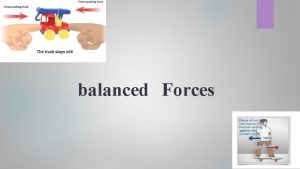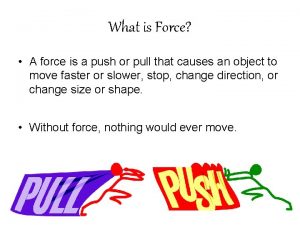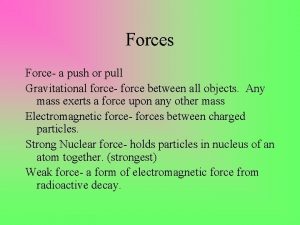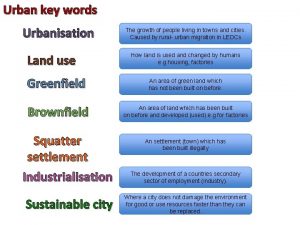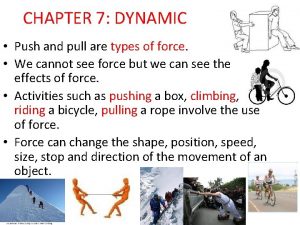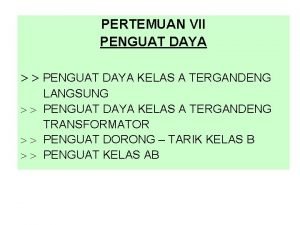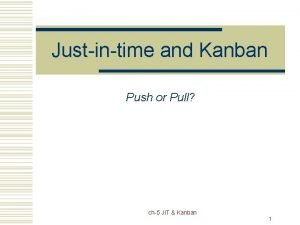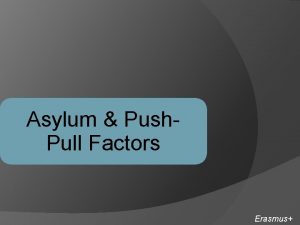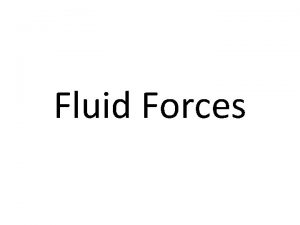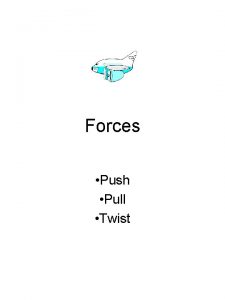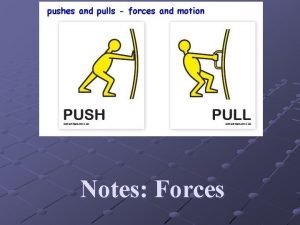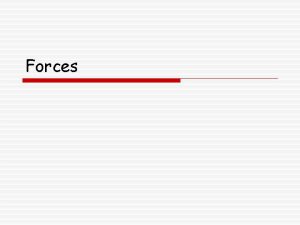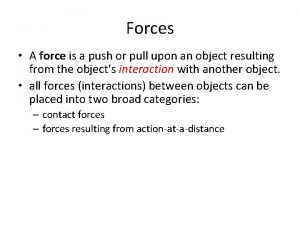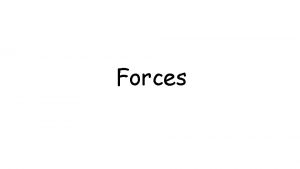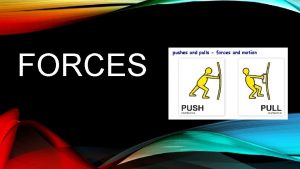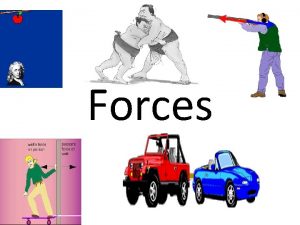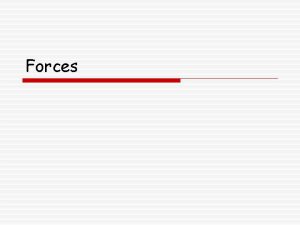Forces A force is a push or pull

















- Slides: 17

Forces A force is a push or pull. Measured in newtons (N)

Forces can change an objects. . . 1. speed

2. direction

3. shape

Newton’s 1 st Law: ØAn object at rest remains at rest if no force acts on it. ØAn object in motion remains in straight-line motion if no force acts on it. No force no acceleration constant velocity Sometimes called the “Law of Inertia” ΣF=0 Resistance to changes in motion Web Links: Truck and ladder, Car and person

Newton’s 2 nd Law: the sum of forces on an object the = object’s mass the object’s x acceleration F = ma Notes Ø 1 N = 1 (kg)(m/s 2) Ø Remember: F=ma involves a specific object F = the sum of forces on that object m = the mass of that object a = the acceleration of that object Ø mass is a measure of inertia Ø another form of this equation: a = ( F)/m

Since force is a vector F has components : Fx = the sum of the x-direction forces Fy = the sum of the y-direction forces And since motion in the x and y directions is independent: Fx = max Fy = may These two equations are 1 Dimensional equations (easy )


5 N 5 N Fx = 0 Free Body Diagram – A picture with vectors showing all forces being exerted on an object. Ex: 3 N 5 N + - If the mass of the object is 0. 5 kg, find its acceleration. Web Link: Skydiver

Resultant Force 10 N 17 N ΣF = sum of all forces acting on an object Mass = 2 kg 2 N 25 N 12 N 23 N What is the resultant force or ΣF acting on the object? What is the objects acceleration?

If a body is in equilibrium, the resultant force acting on it must be zero, ie ΣF = 0

What happens to each car if a) It was originally stationary b) It was originally moving 10 N 9 N 4 N

Ex: 120 N If you push your car of mass 1500 kg over a distance of 250 m, what will be the final speed of the car? Hint: 2 nd law & kinematics


Newton’s rd 3 Law What would happen if the girl pushed the boy? The boy would move The girl would move For every action there is an equal and opposite reaction.

Newton’s 3 rd Law (Action-Reaction Law): If object A exerts a force on object B, then object B exerts an equal and opposite force on object A. Web Link: Action-Reaction Ex: An ice skater pushes on a wall v. Why don’t F and –F cancel? v. Why doesn’t the wall move? Web Link: Force Tutorial F -F

Review Question: In 1998, NASA’s 153 million dollar probe “Deep Space 1” was launched. On board was an experimental “ion-engine” that put out a thrust merely equal to the weight of a piece of paper. The entire spacecraft reportedly weighed 1000 pounds. Starting from rest, in space, powered only by the ion-engine, how many miles per hour would the spacecraft be going after 300 days? Web Link: Deep Space 1
 Balanced force definition science
Balanced force definition science Magnetic force push or pull
Magnetic force push or pull Is gravitational force a push or pull
Is gravitational force a push or pull What is angle of pull
What is angle of pull Carefully blended mix of promotion tools
Carefully blended mix of promotion tools Push pull osmotic pump
Push pull osmotic pump Pull influencing style
Pull influencing style Urban key house
Urban key house Landflucht push und pull faktoren
Landflucht push und pull faktoren Kanban push pull
Kanban push pull Demand pull technology push
Demand pull technology push Push and pull chapter 7
Push and pull chapter 7 Penguat daya kelas a
Penguat daya kelas a Push and pull scenarios
Push and pull scenarios Different types of unemployment
Different types of unemployment Push and pull factors of urbanisation
Push and pull factors of urbanisation Jit environment
Jit environment Push und pull faktoren
Push und pull faktoren
